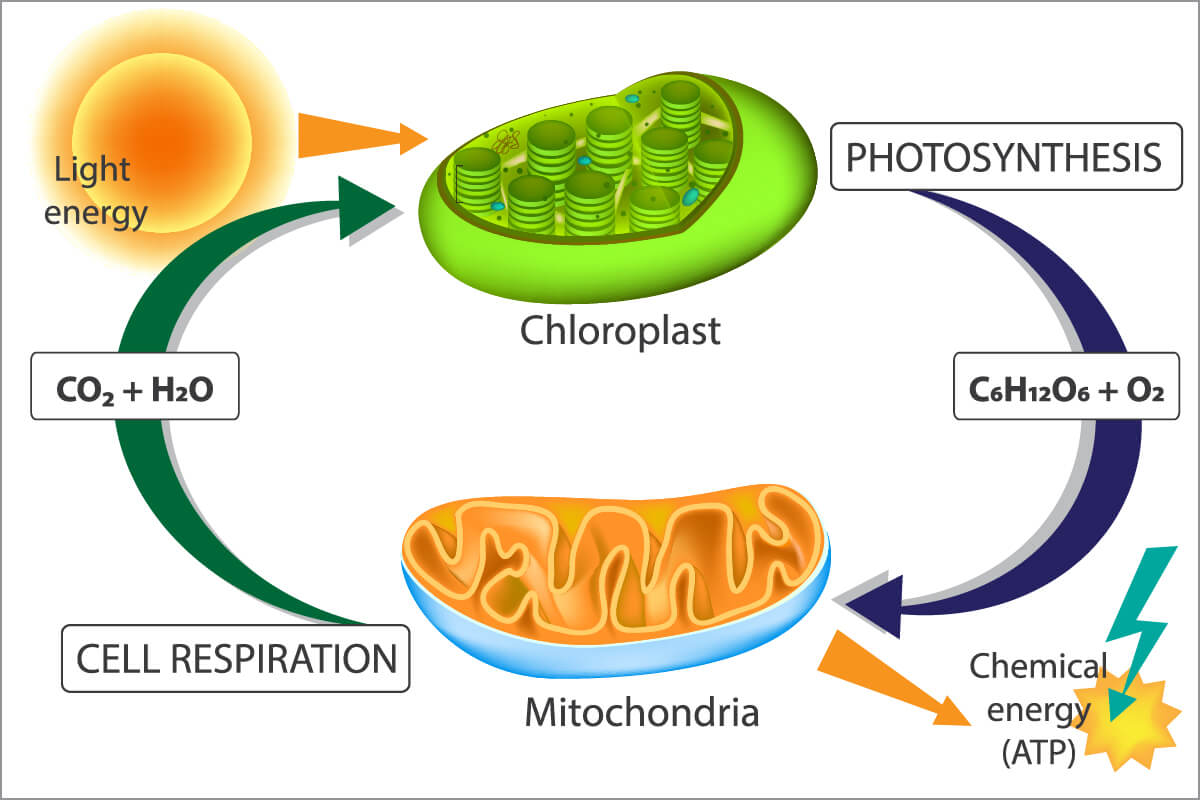This is a lesson summary. The full lesson can be viewed by purchasing an online course subscription.
Learning Objective
In this lesson we will learn about two of the most important chemical processes in living things – cellular respiration and photosynthesis.
Learning Outcomes
By the end of this lesson you will be able to:
- Write chemical equations for respiration and photosynthesis.
- Describe the role of respiration and photosynthesis in living things and explain how energy transfers are involved in these processes.
- List types of organisms where respiration and photosynthesis take place, as well as the cell structures where these chemical processes occur.
- Compare aerobic and anaerobic respiration.
- Compare respiration and photosynthesis.

(Image: sakurra, Adobe Stock)
Lesson Summary
- Living organisms obtain energy by breaking down glucose in their cells – a process known as respiration.
- Respiration can be summarised as:
- glucose + oxygen → carbon dioxide + water + energy
- Animals obtain glucose for respiration by digesting food that they eat.
- Plants obtain glucose for respiration by producing it through a process known as photosynthesis.
- Photosynthesis uses the energy of sunlight to convert carbon dioxide and water into glucose and oxygen.
- Photosynthesis can be summarised as:
- carbon dioxide + water + sunlight energy → glucose + oxygen
- Glucose that is not immediately used by plants can be converted to starch for storage.
- Glucose that is not immediately used by animals can be converted to glycogen for storage.
- Respiration mostly occurs in the presence of oxygen, where it is called aerobic respiration.
- It can also occur in the absence of oxygen, where it is called anaerobic respiration.
- Examples of anaerobic respiration are alcoholic fermentation and lactic acid fermentation.
- Aerobic respiration produces significantly more energy than anaerobic respiration.
- Respiration takes place in cell structures called mitochondria.
- Mitochondria occur in all cells; therefore respiration takes place in all organisms.
- Photosynthesis takes place in cell structures called chloroplasts.
- Chloroplasts occur in the cells of plants, green algae and some bacteria; therefore photosynthesis only takes place in these organisms.
- Respiration and photosynthesis both involve the exchange of gases between organisms and their surrounding environment.
- In humans, this involves the nose or mouth, lungs and bloodstream.
- In plants this involves pores in leaves known as stomates.
Respiration Respiration and Photosynthesis Photosynthesis Occurs in all organisms Occur in living things Occurs mainly in plants Occurs in mitochondria Occur in cells Occurs in chloroplasts Consumes glucose Involve glucose Produces glucose Consumes oxygen Involve oxygen Produces oxygen Produces carbon dioxide Involve carbon dioxide Consumes carbon dioxide Produces water Involve water Consumes water Releases energy Involve energy conversion Absorbs energy Does not require sunlight Are complex chemical process Requires sunlight
Comparing respiration and photosynthesis
(Header image: Zbysek.nemec, Wikimedia Commons)
